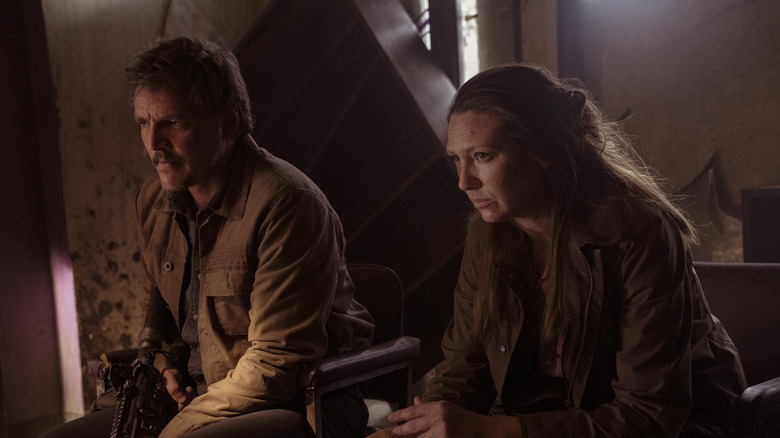Why HBO's The Last Of Us Is Using Tendrils Instead Of Spores To Explain The Spread Of The Cordyceps Infection
While video game adaptations don't exactly have the best track record with fans or critics, early signs indicate that HBO's "The Last of Us" has figured out the secret to doing it right. As of this writing, the horror series has an incredibly 97% on Rotten Tomatoes, with over 60 reviews counted thus far. Most of the praise has been directed at the performances of the cast, as well as the show's faithfulness to the source material that inspired it.
Still, even the most faithful adaptation is going to change certain elements of the story, and "The Last of Us" is no different in that regard. In the video game, the cordyceps infection that turns people into zombie-like creatures is mainly spread through spores that infect the air of certain areas in the game world. However, the HBO show has elected to use tendrils instead. And, according to the showrunners, there's a very good reason for this particular change.
The Last of Us showrunners wanted a more interconnected threat
During a recent interview with Collider, "The Last of Us" co-creators Craig Mazin and Neil Druckmann elaborated on the creative process when it came to translating the cordyceps virus from the video game to the big screen. While this particular fungal form of zombie infection is unique enough in its own right, they decided fairly early on that they wanted to deviate from the spores of the game. This obviously meant coming up with something else entirely, and the pair eventually landed on tendrils, as it allowed the threat to be much more interconnected in nature.
"The game had spores in the air and people had to wear gas masks, and we decided, early on, that we didn't wanna do that for the show," Druckmann said. "Eventually, those conversations led us to these tendrils. And then, just thinking about how there's a passage that happens from one infected to another, and like fungus does, it could become a network that is interconnected. It became very scary to think that they're all working against us in this unified way, which was a concept that I really liked, that got developed in the show."
While some fans of the game may be wary of this kind of change, Druckmann's reasoning here makes a lot of sense. Making the infected and their more powerful counterparts more of a unified threat has a lot of potential to raise the stakes for the show, hopefully in a way that will make encounters with them much more frightening for viewers. Plus, the implications of airborne spores raises a lot of logistical questions, such as why the spores are not more widespread and why the entire planet isn't infected. Tendrils help erase such headache-inducing concerns.

